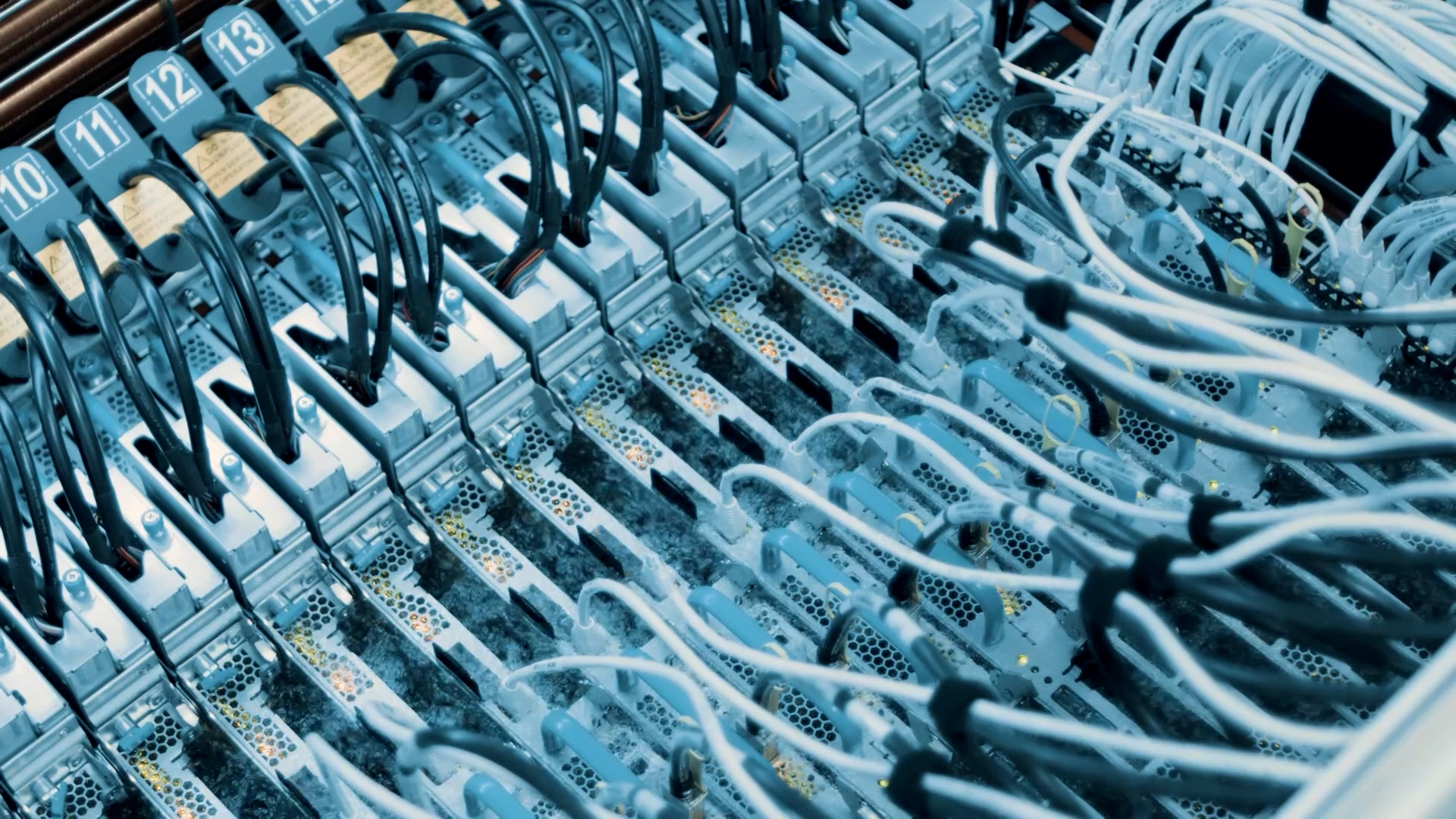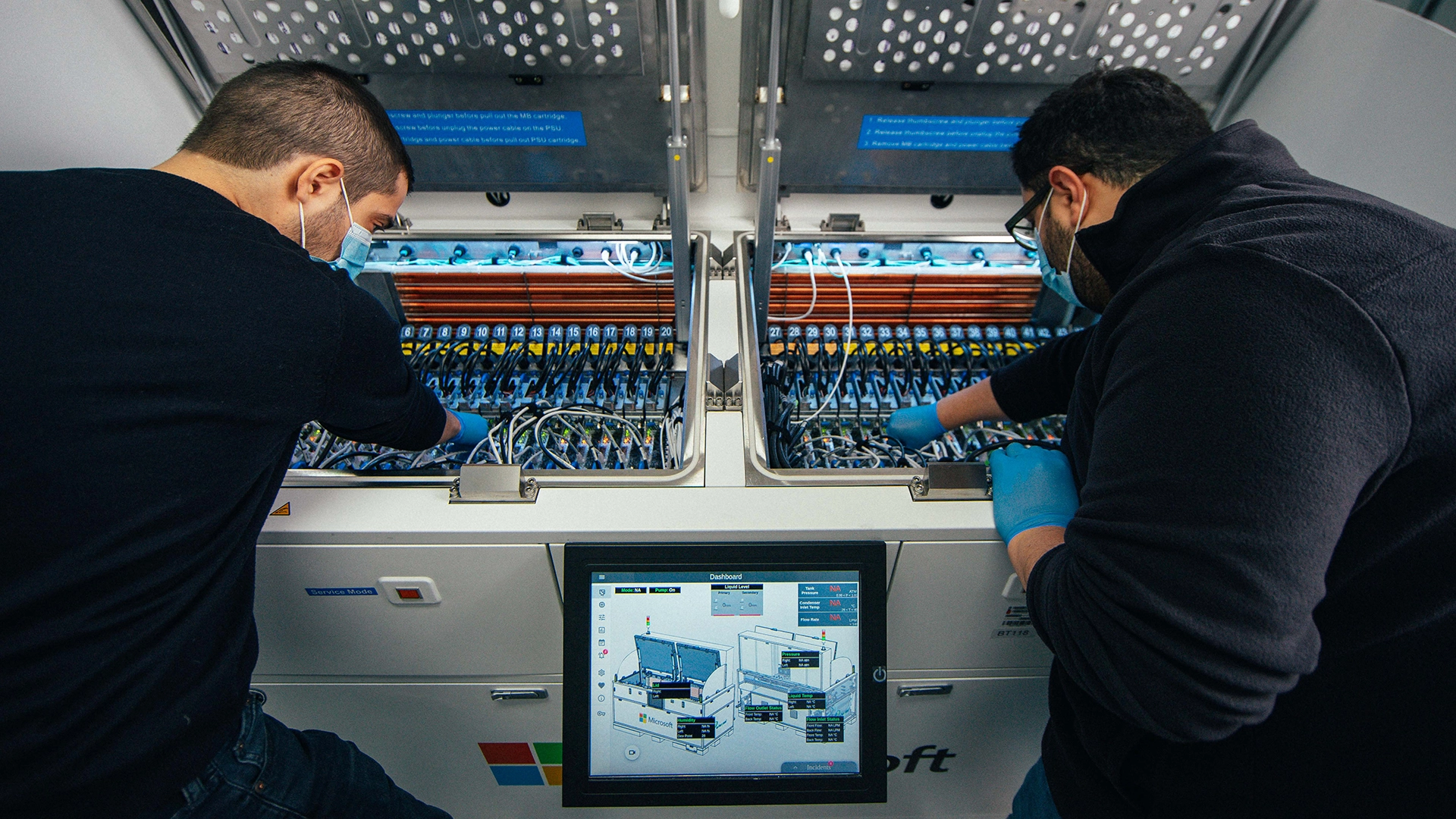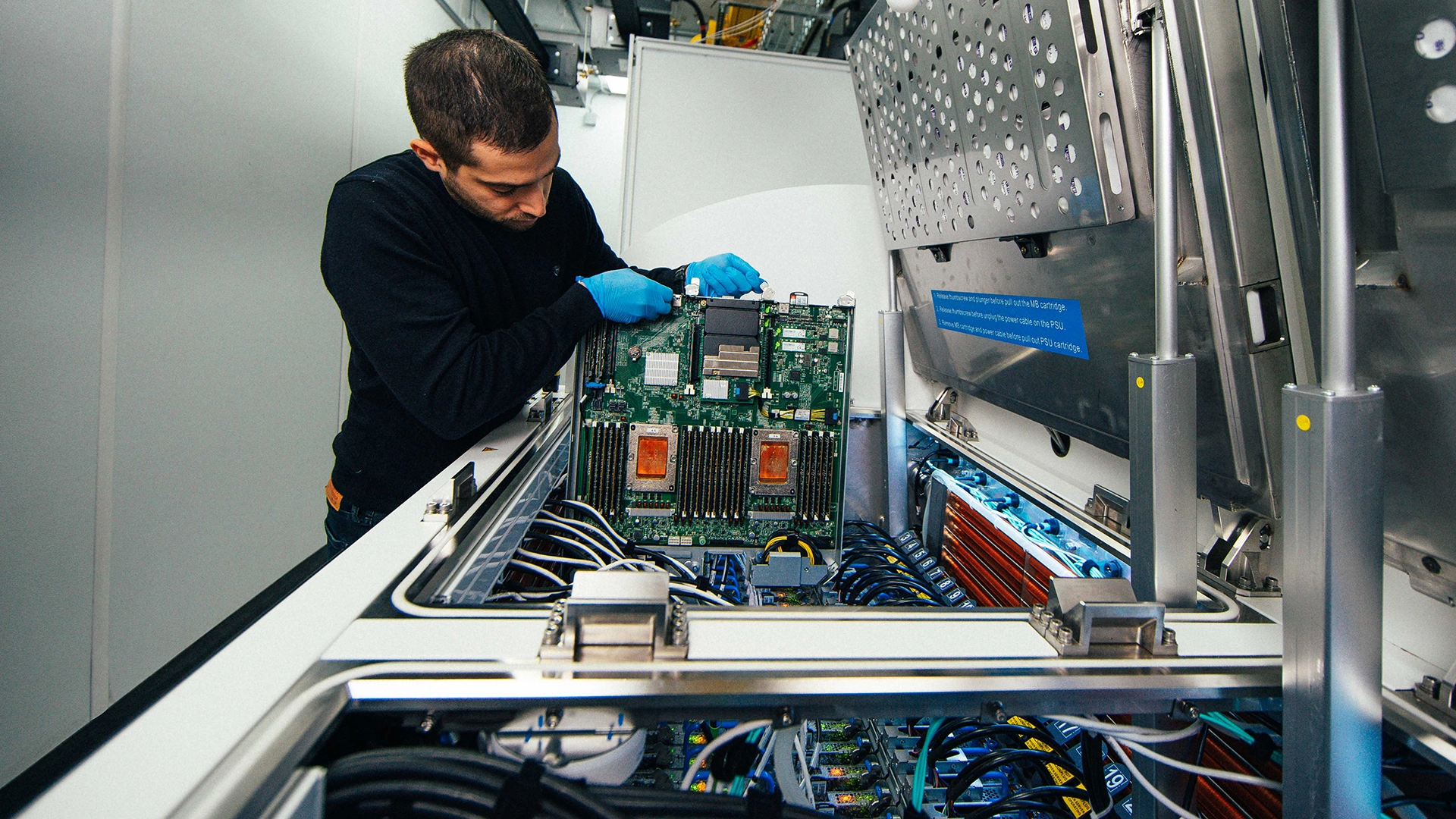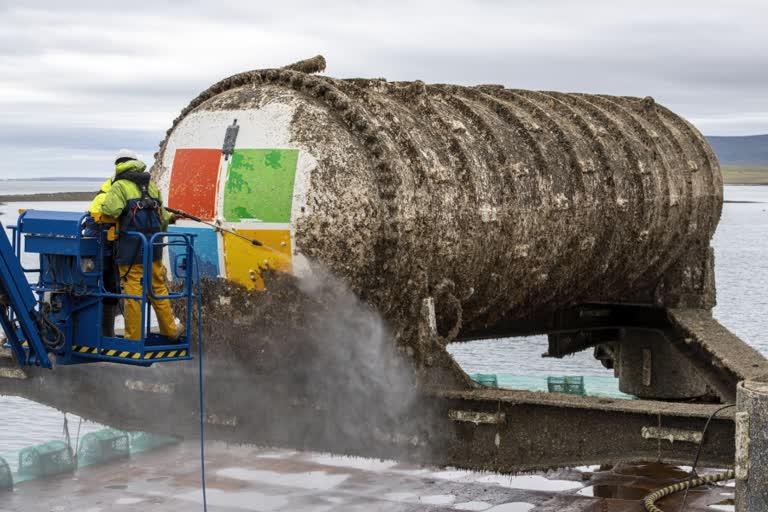San Francisco: After sinking an entire data centre to the bottom of the Scottish sea, Microsoft has now started to submerge its servers in liquid to improve performance and save energy.
According to a report in The Verge, a rack of servers is being used for production loads "in what looks like a liquid bath".

"It's essentially a bathtub. The rack will lie down inside that bathtub, and what you'll see is boiling just like you'd see boiling in your pot. The boiling in your pot is at 100 degrees Celsius, and in this case, it's at 50 degrees Celsius," Christian Belady, vice president of Microsoft's data centre advanced development group, was quoted as saying in the report.
The fluorocarbon-based liquid works by removing heat as it directly hits components, and the fluid reaches a lower boiling point to condense and fall back into the bath as a raining liquid.
This liquid cooling has been used by cryptocurrency players to mine for bitcoin and other cryptocurrencies.
"It potentially will eliminate the need for water consumption in data centres, so that's a really important thing for us," Belady said.

"It's in a small data centre, and we're looking at one rack's worth. We have a whole phased approach, and our next phase is pretty soon with multiple racks."
In an earlier experiment, Microsoft sank a shipping container-sized data centre 117 feet deep in the seafloor off Scotland's Orkney Islands in 2018 as part of its Project Natick.
The tech giant in September last year said it retrieved the data centre coated in algae, barnacles and sea anemones, confirming the viability of seafloor data storage in the near future.
The researchers think this hardware will help them understand why the servers in the underwater data centre are eight times more reliable than those on land.

The team hypothesises that the atmosphere of nitrogen, which is less corrosive than oxygen, and the absence of people to bump and jostle components, are the primary reasons for the difference.
"By putting data centre underwater near coastal cities, data would have a short distance to travel, leading to fast and smooth web surfing, video streaming and game playing," Microsoft had said in a statement.
Also Read: Realme sets new smartphone quality standard for young users
(Inputs from IANS)



